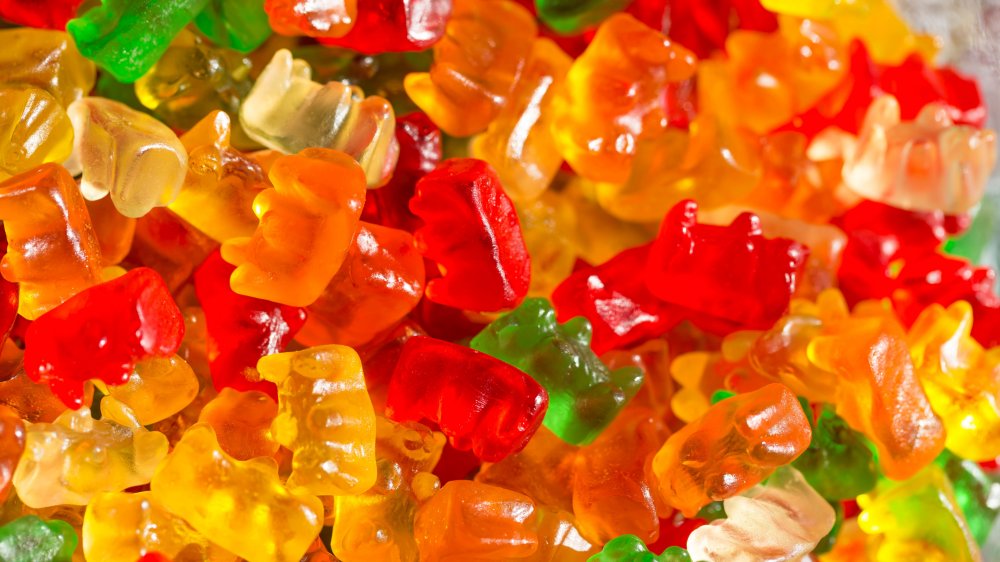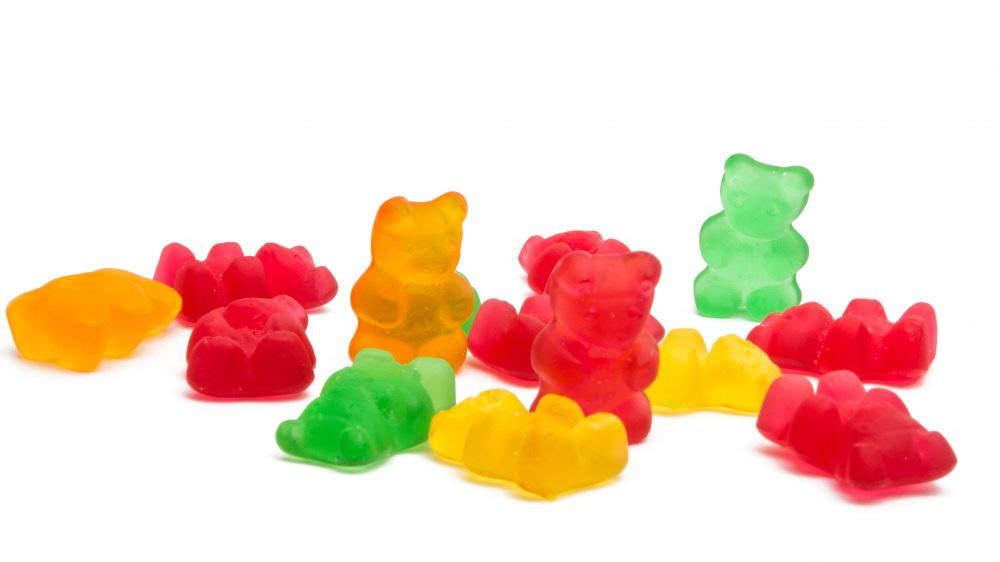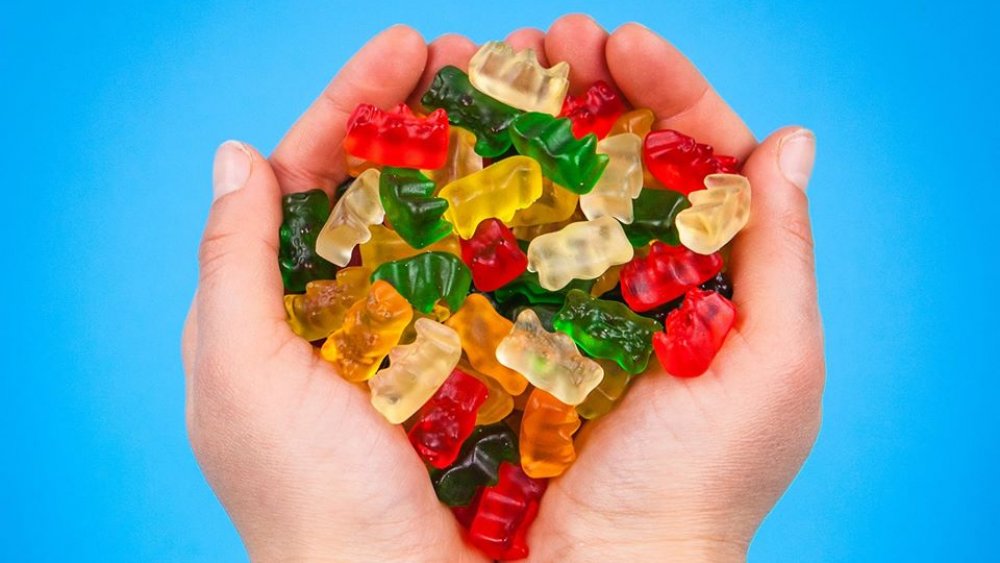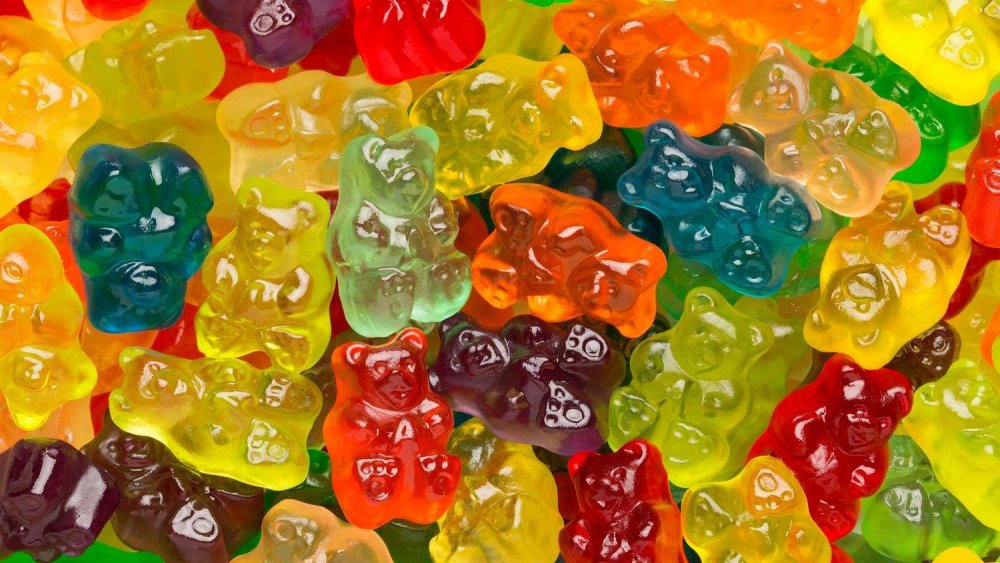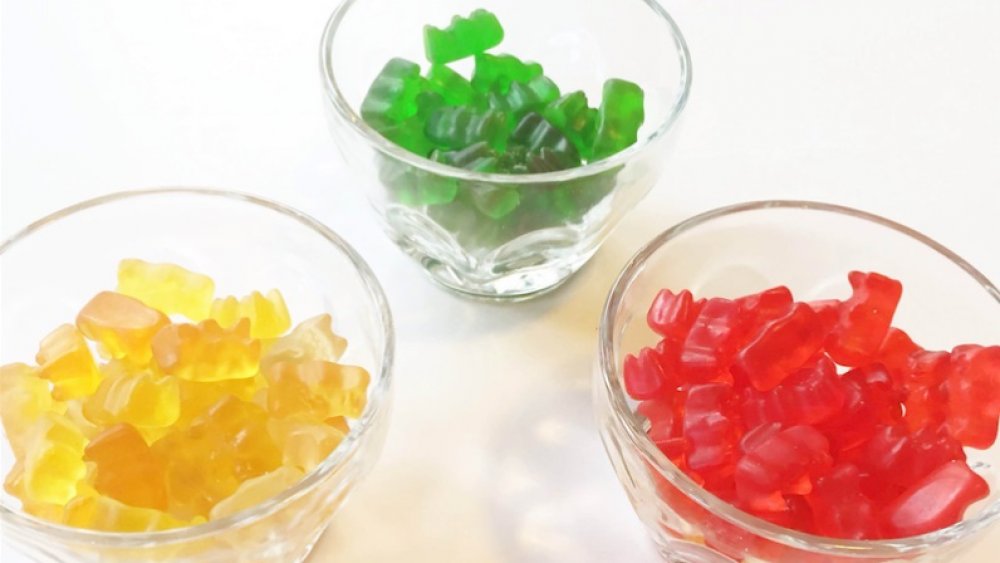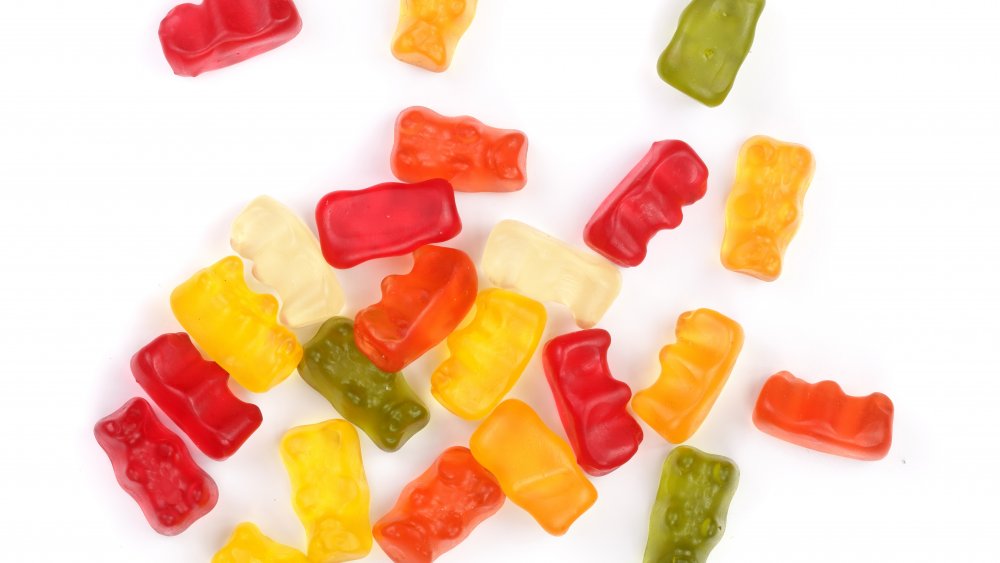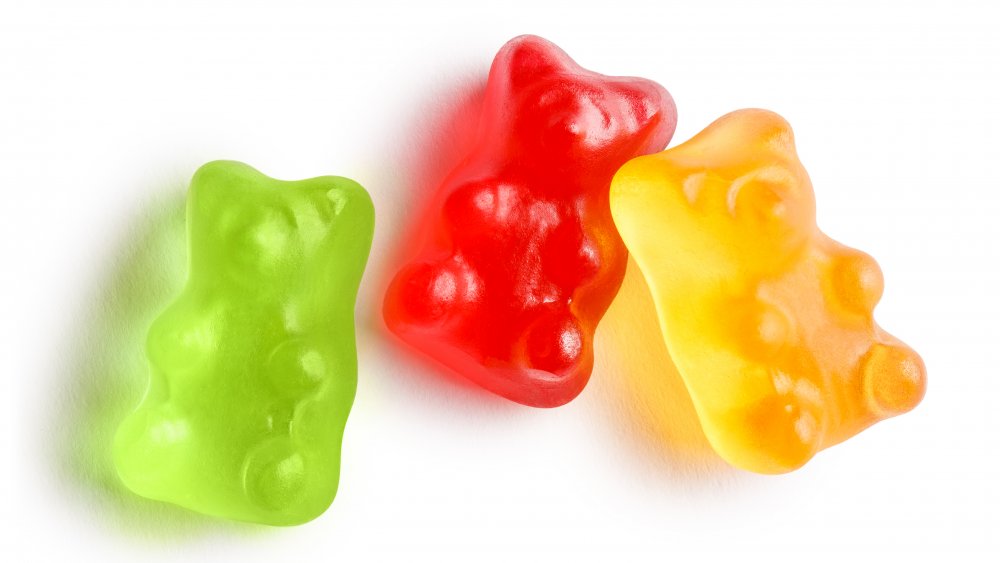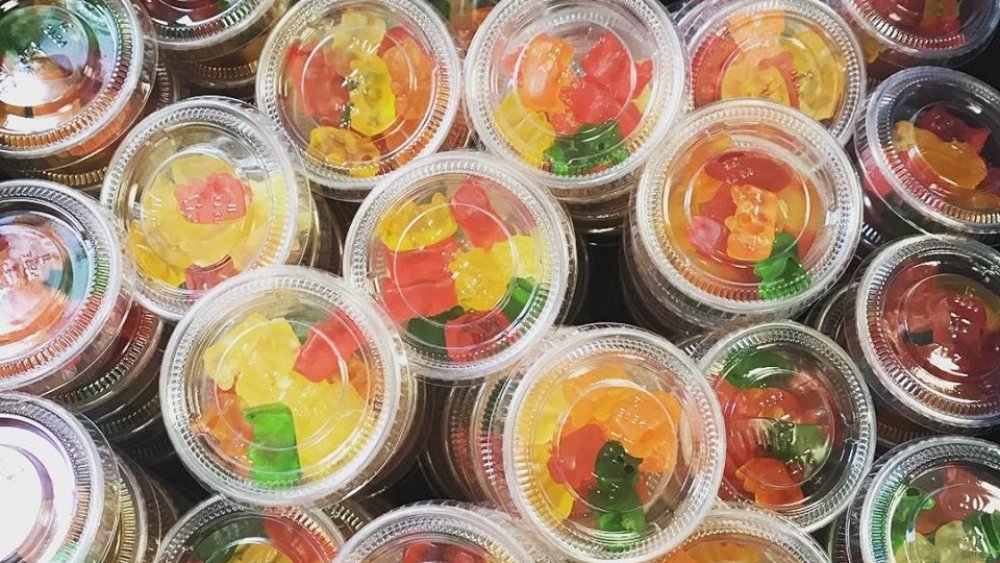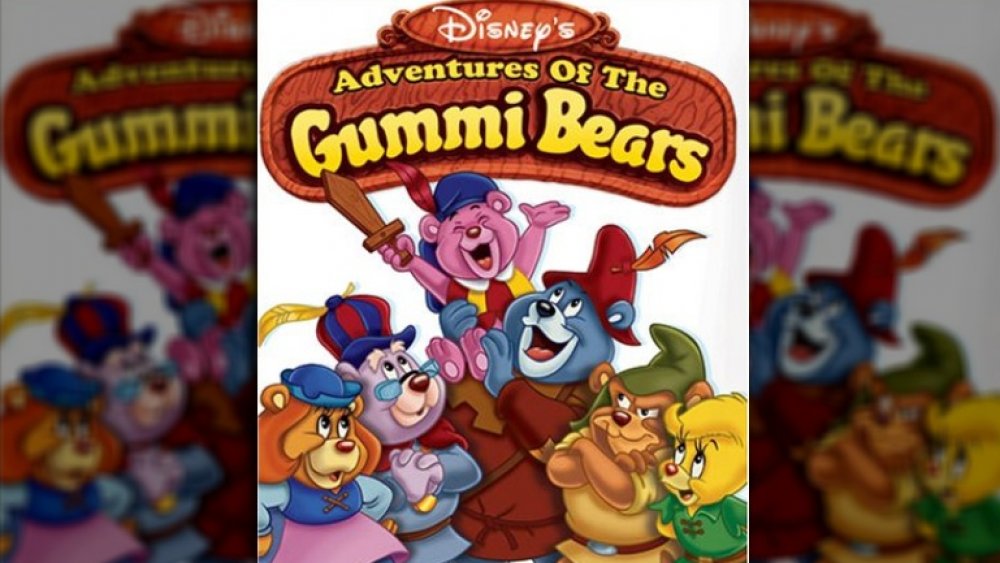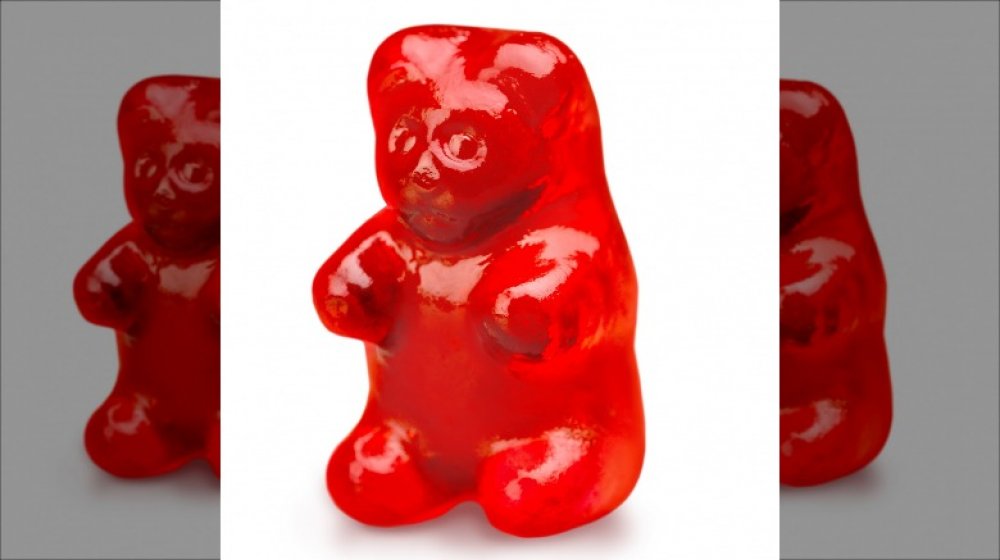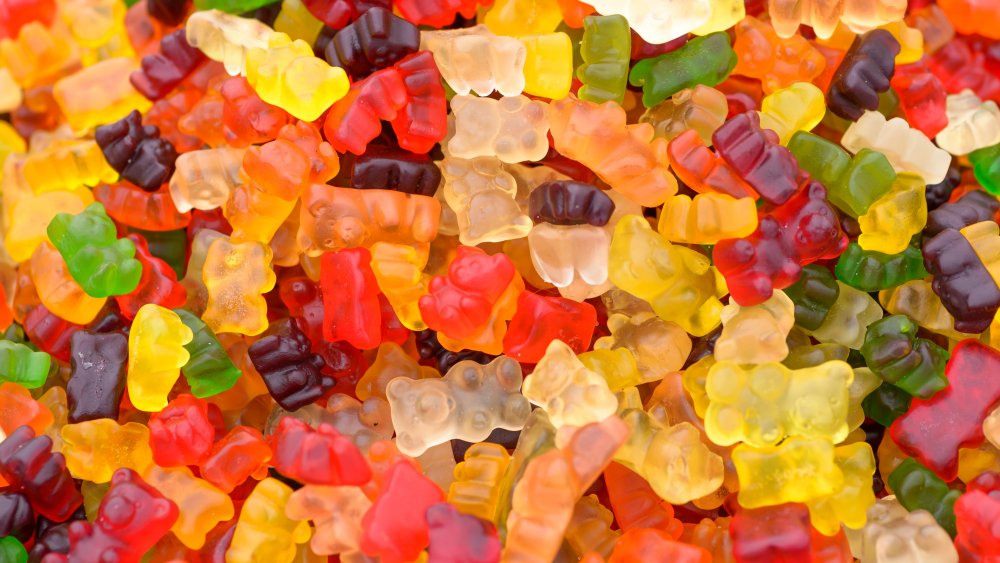The Untold Truth Of Gummy Bears
We may receive a commission on purchases made from links.
There are the people who love to munch on chocolate bars, from Butterfingers to Snickers, indulging in the perfect combination of sweet and salty. And then there are the candy lovers who are obsessed with anything chewy, gooey, and gummy. Gummy candies only seem to be rising in popularity, and really, there's a gummy candy in pretty much every shape out there at this point.
But despite the introduction of gummy candies like frogs, butterflies, and even mini soda bottles, gummy bears will forever be one of the most iconic gummy candies we turn to.
But what's the story behind these little gummy bears? How did they get their start, and what's in them that makes them so perfectly chewy? They're a ridiculously satisfying sweet when you're trying to curb a craving, but as it turns out, there's a lot more to their story than meets the eye. We decided to grab a handful and dig a little deeper. This is the untold truth of gummy bears.
Gummy bears were born in Germany
The first company to make gummy bears, Haribo, has been around for 100 years, and it got its start in Germany. Hans Riegel, the founder of Haribo, was only 27 when he became a trained confectioner and started his company. He had been working for German candy company, Kleutgen & Meier, before deciding to go out on his own in 1920.
To get started, Riegel bought a house in Kessenich, Germany, and with a sack of sugar and a brick oven, he moved in and created his first factory in his backyard. Riegel began producing hard candies until he decided to try a few experiments with gelatin. It took two years, but Riegel invented his first bear-shaped candy made of gummy in 1922. To get his product to the people of Germany, Riegel delivered his bears via bicycle with the help of his wife and only employee, Gertrud, until sales really began to surge and a company car was purchased 1923.
They weren't always called gummy bears
If you ask anybody what those cute little colored bears made of gelatin are called, they'll tell you they're called gummy bears. But it certainly wasn't always that way. From the very beginning when gummy bears surfaced in 1922, they were called Dancing Bears. Riegel created a bear-shaped gummy candy from the get-go, but he took inspiration from a popular German tradition at the time to make them relevant. The European practice of performing or dancing bears involved training bears to tumble, dance, or do tricks. The practice was eventually banned, but it lived on through Riegel's confections.
The original gummy bears, or Dancing Bears, were, of course, bear-shaped. They were also a bit larger than gummy bears today and a bit thinner. It wasn't until 1960 that Haribo's Dancing Bear changed names, and in 1978, the bears changed shape to the shorter version we see today.
Gummy Bears haven't been in the U.S. that long
While gummy bears have been around since the 1920s, with plenty of time spent in Germany, they really haven't been in the United States all that long. After Riegel's sons, Hans and Paul, took over the company and launched their marketing efforts toward a larger audience in Europe, the bears also gained popularity in the U.S. as they were considered a popular foreign cuisine.
According to Bon Appetit, U.S. high school teachers would bring gummy bears into their German language classrooms in the 1970s so students could try cuisine originally from Germany, and military members would bring them home as a souvenir for their families. As popularity with children grew, other candy companies knew it was time to jump on the gummy bear bandwagon.
As it turns out, Jelly Belly was the first American candy company to begin producing these little bears in 1981, but it was only one year later that Haribo brought its product over to the U.S. Although production operations were still in Germany, Haribo began distributing in the U.S. Brands such as Brach's and Albanese followed years later to start producing their own little colorful bears.
Gummy bear colors make absolutely no sense
Have you ever grabbed a handful of gummy bears, and picked out all of the bears of one specific color because, presumably, they were your favorite flavor? And then, you bit into the gummy candy only to find out the flavor was lying to you? Really, it happens to the best of us.
Charles Spence, a professor of experimental psychology, told NPR that all our senses affect one another, and flavor perception can be incredibly multisensory. That is the reason why when we see an orange candy, we think it's orange fruit-flavored, or a purple candy that's flavored grape.
Vice President of Marketing for Haribo told NPR that the company's gummy bears come in five flavors: strawberry, lemon, orange, pineapple, and raspberry. But, oddly enough, there is a green colored gummy bear in the mix. And while, when we bite into that green gummy bear, we associate green with green apple, watermelon, or maybe even lime, the flavor is actually strawberry. As for Brach's, their gummy bears come in five colors, yet only four flavors, which really makes you wonder what many perceive that fifth color to taste like.
Gummy bears are made with gelatin
We all know there's just something so fun about biting into a gummy candy. After all, next to the flavor, of course, it's the texture we love. But what exactly are gummy bears made of to give them that chewy, gummy texture? Well, much like marshmallows and Jell-O, it's all about the addition of gelatin.
Gummy bears are made with sugar, corn syrup, water, coloring, and flavorings, but it's the gelatin that really makes the texture. Gelatin allows for the thickening of a product, while still keeping a gooey consistency without adding any color or flavor.
Gelatin comes from collagen, which is found in the tissue, skin, and bones of animals such as pigs and cows. This is also the reason many vegetarians opt not to consume gummy candies because they can't be certain there are no animal products included.
You can find Halal gummy bears
When it comes to eating gummy bears, other than the restrictions for vegetarians, of course, it might seem they're acceptable to everyone. But as it turns out, they're certainly not — unless they're made in a certain factory.
Those who practice Islam often follow a guideline of only eating Halal products, or products that are permissible by their practice. According to The Kitchn, a meat is only considered Halal if it is not from a forbidden cut like from hindquarters, or if it does not come from certain animals such as pigs. Other requirements for permissible meat under Islam law include restrictions on how the animal lived and how it was slaughtered.
Because gelatin is made from the tissue, skin, and bones of pigs and cows, there are certain products containing gelatin that aren't considered Halal. Haribo took note of that and changed their practices to meet those needs. Haribo factories in Germany, the UK, Austria, Spain, Brazil, and France all utilize gelatin derived from pork, but the production facility in Turkey only uses gelatin derived from beef. According to Harbo (via Halal Snackbox), the factory in Turkey uses Halal-certified meat.
You can turn gummy bears into shots
There's something so nostalgic about eating a handful of gummy bears. They're one of the most adorable candies out there, and for many, it's hard not to remember eating them as a child. But what if you could take gummy bears and really kick them up a notch to make an adult version? Turns out you can.
Just as you make Jell-O shots by adding vodka to Jell-O, you can make your own gummy bear shots by adding vodka to a bowl of gummy bears. According to Spoon University, mixing alcohol with gummies makes the gummy candy absorb the alcohol. You can use any type of vodka you'd like, especially if you want to get creative on flavors. All you do is add your gummy bears to a bowl, pour vodka over top until it just barely covers the top of your gummy bears, and let them sit for a few days. The bears will absorb the alcohol, and you'll end up with a plump, juicy gummy candy that may offer a little buzz.
Gummy bears had their own Disney cartoon
There aren't too many candies that can say they're television famous. Sure, there's plenty of commercials for various candies, and of course they appear within television shows, but a television show devoted to a candy? That's pretty rare.
According to Mental Floss, Disney decided to capitalize on the popularity of the introduction of gummy bears in the United States. A family of cuddly, colorful bears made up the characters of The Adventures of the Gummi Bears, which debuted in 1985. The show told the story of the Gummi race that was eliminated because of humans, so the last family of bears hid beneath a medieval human kingdom. Once a young boy discovers the bouncing gummy bears, he tries to keep their secret safe, while the evil antagonist, Duke, tries to steal the Gummiberry Juice that keeps them bouncing. Who would have guessed you could make an entire television show revolving around a gummy candy? But it satisfied so many viewers that the show aired for six seasons until 1991.
You can buy giant gummy bears
At this point, you can buy almost anything you could ever imagine on the internet. Really, the question just comes down to would you actually want to? But what if you could buy a gigantic gummy bear? Certainly, for the gummy bear enthusiasts of the world, that would be a dream come true.
In September 2019, VAT19.com debuted what was, at the time, the world's largest gummy bear. The gummy monstrosity was 9 ½ inches tall, weighed five pounds, and was the combined equivalent of 1400 of your average-sized gummy bears.
Now, we're not experts on how exactly one would eat a giant gummy bear (cut it into slices, maybe?), but it seems that would take a long time. Luckily, if you don't finish it all at one time, or with your group of friends, the bear can be wrapped in plastic wrap and kept in the fridge for a year. Since its introduction, several other companies have jumped on the bandwagon, offering five-pound gummy bears to anyone who really wants that much bear.
There's a ridiculous amount of gummy bears made and sold
When you consider the number of companies producing gummy bears, all vying to be crowned the favorite, it's pretty impressive. Haribo has factories all over the world, not to mention the production coming from Black Forest, Trolli, and many other brands. Truly, the amount of little gummy bears being produced is astonishing.
In 2017, Haribo announced its plans to open it's first U.S. factory in Wisconsin by 2020. According to the Seattle Times, Haribo said it would add 400 jobs, adding to the existing 7,000 people Haribo employed worldwide at the time, all working to produce 100 million gummy bears daily.
The introduction of the new factory was in response to the ridiculous growth the candy industry had seen in gummy bear popularity. According to Quartz, U.S. sales of gummy bears for just Haribo from 2011 to 2017 had increased to $115 million, showing it was time to bring production to the U.S..
People eat gummy bears after a workout
Of course, shoving pounds and pounds of gummy bears into your mouth probably isn't the healthiest choice. And eating them for three meals a day certainly won't get you the adequate nutrition you need daily. But, what if we told you that eating gummy bears after a workout was common practice? And it might even be good for you.
According to The Philadelphia Inquirer, when you exercise your body, it's fueled by glycogen, or glucose, which is what gives you the energy to actually get in a workout. As you work out, your muscles need nutrients that will help their recovery process, and that's where carbohydrates come in. Many people opt to reach for carbs with a high glycemic index after a workout because they can be absorbed quickly, easily, and they help to increase insulin. And oddly enough, gummy bears provide just that. Gummy bears offer you a quick sugar rush that replenishes the glycogen expelled during your workout, giving yourself the perfect excuse for a little treat.
